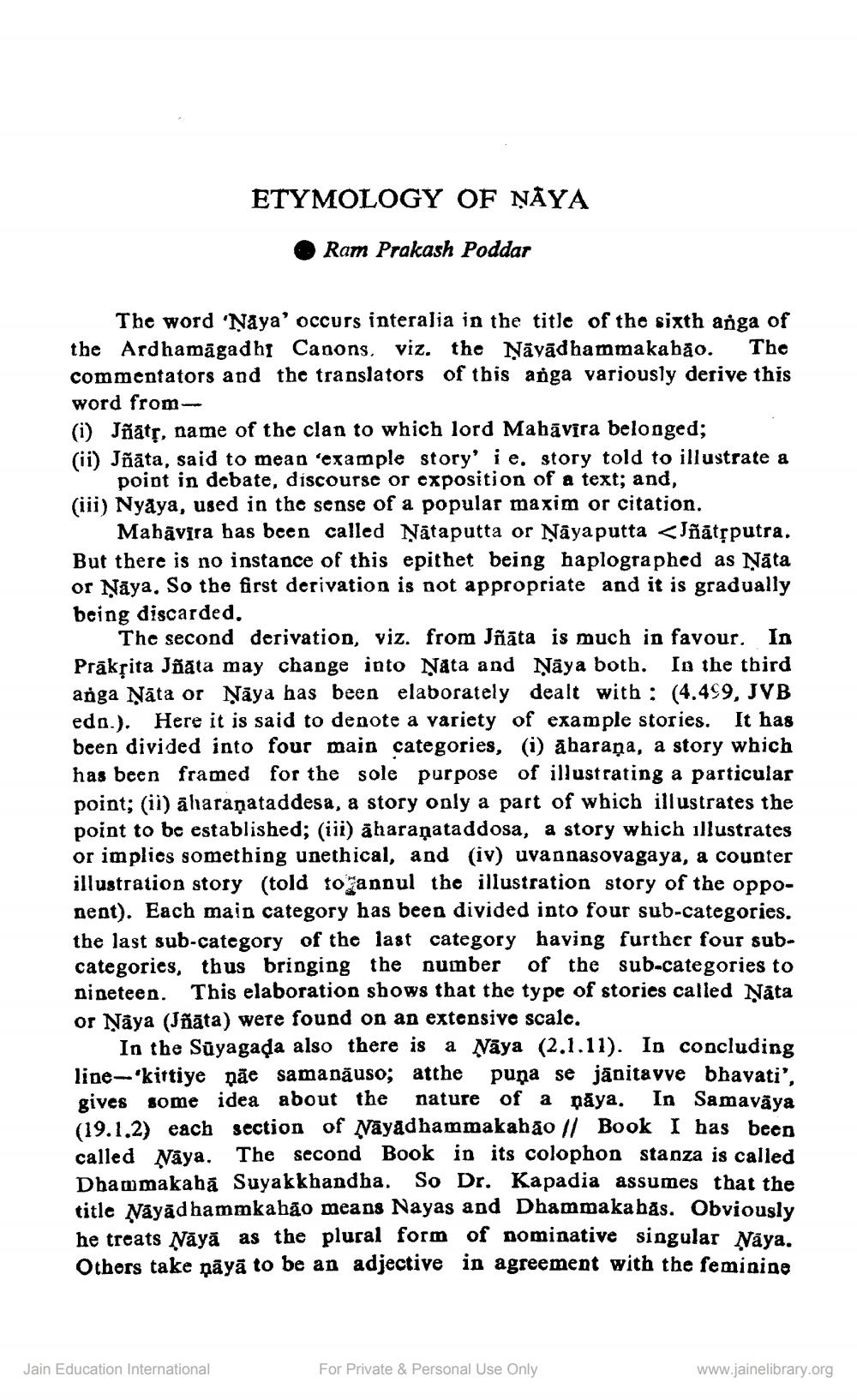________________
ETYMOLOGY OF NAYA
Ram Prakash Poddar
The word 'Naya' occurs interalia in the title of the sixth anga of the Ardhamagadh Canons. viz. the Nāvādhammakahāo. The commentators and the translators of this anga variously derive this word from
(i) Jñatṛ, name of the clan to which lord Mahāvīra belonged;
(ii) Jñata, said to mean 'example story' i e. story told to illustrate a point in debate, discourse or exposition of a text; and, (iii) Nyaya, used in the sense of a popular maxim or citation.
Mahavira has been called Nataputta or Nayaputta <Jñātṛputra. But there is no instance of this epithet being haplographed as Nata or Naya. So the first derivation is not appropriate and it is gradually being discarded.
The second derivation, viz. from Jñata is much in favour. In Prakrita Jñata may change into Nata and Naya both. In the third anga Nata or Naya has been elaborately dealt with: (4.499, JVB edn.). Here it is said to denote a variety of example stories. It has been divided into four main categories, (i) āharaṇa, a story which has been framed for the sole purpose of illustrating a particular point; (ii) aharaṇataddesa, a story only a part of which illustrates the point to be established; (iii) aharaṇataddosa, a story which illustrates or implies something unethical, and (iv) uvannasovagaya, a counter illustration story (told to annul the illustration story of the opponent). Each main category has been divided into four sub-categories. the last sub-category of the last category having further four subcategories, thus bringing the number of the sub-categories to nineteen. This elaboration shows that the type of stories called Nata or Naya (Jñāta) were found on an extensive scale.
In the Suyagaḍa also there is a Naya (2.1.11). In concluding line-kittiye pãe samanäuso; atthe puņa se janitavve bhavati', gives some idea about the nature of a paya. In Samavaya (19.1.2) each section of Nayadhammakahão // Book I has been called Naya. The second Book in its colophon stanza is called Dhammakahā Suyakkhandha. So Dr. Kapadia assumes that the title Näyādhammkahão means Nayas and Dhammaka has. Obviously he treats Nāyā as the plural form of nominative singular Naya. Others take ṇāyā to be an adjective in agreement with the feminine
Jain Education International
For Private & Personal Use Only
www.jainelibrary.org




